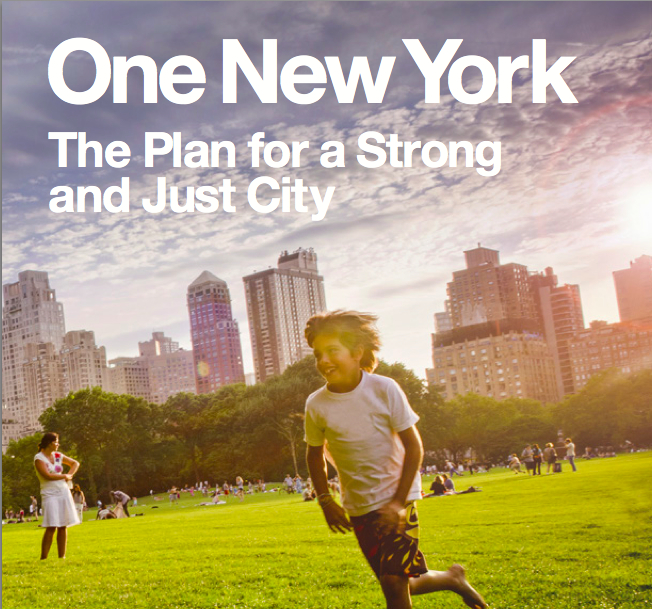
Office of the Mayor
A metropolis with 800,000 fewer people in poverty. A city that sends no garbage to landfills. A place that offers affordable, high-speed broadband to everyone.
Such is the New York that Mayor de Blasio envisions by 2030 under a breathtakingly ambitious plan he unveiled in an Earth Day speech that pivoted from environmental concerns to a broader agenda encompassing equality, regionalism and more.
“This is going to be a game-changer in this city,” de Blasio said as he brandished the “One New York “plan before the crowd at The Point, a community development organization in Hunts Point. “This is the blueprint for the future of New York City.”
The speech left de Blasio vulnerable to all the familiar criticisms of his mayoralty: that he emphasizes dreams at the expense of details, that he neglects environmental issues in favor of a familiar equity lens, that he’s seeking a national profile more than local, day-to-day success.
But leaving aside the fact de Blasio has delivered more than once on the tactical stuff (see pre-K, Vision Zero, paid sick leave, etc.), to view the Earth Day speech merely as pie-in-the-sky progressivism would miss the point. By folding environmental resilience and sustainability within the mission of creating a more just city, de Blasio has done more than any public official to resolve the tension between saving the earth and fighting poverty—a reality that one can see in the plastic bag ban debate and countless other discussions.
As the mayor noted, the point isn’t that either income inequality or climate change is less an existential threat than the other, but rather that climate change at least has a global movement taking concrete, if incremental, steps to reduce it. Income inequality, the mayor said Wednesday, has been “fundamentally unaddressed.”
The setting for the Earth Day speech was very different from Mayor Bloomberg’s PlaNYC rollout in 2007, when hundreds of guests were brought out to the Queens Museum of Art for a multi-media presentation emceed by Tom Brokaw. De Blasio’s schedule billed the address merely as a press conference, and it was held in a Bronx neighborhood that lives at the nexus of income inequality and environmental injustice.
But in a departure, de Blasio praised his predecessor’s efforts, saying of PlaNYC: “These were crucial, crucial issues to address and it did very well.” It’s worth noting that critics faulted PlaNYC for being more of a vision than a real “plan,” and also that Bloomberg pledged in his 2006 state of the city speech to effect “a major reduction in the number of children, women and men who live in poverty in this city over the next four years,” which did not occur. That history is both context and cautionary tale for the current mayor.
As City Limits absorbs the plan and its details, we’re curious: What do you think? Read the plan here and then send us your comments here.








